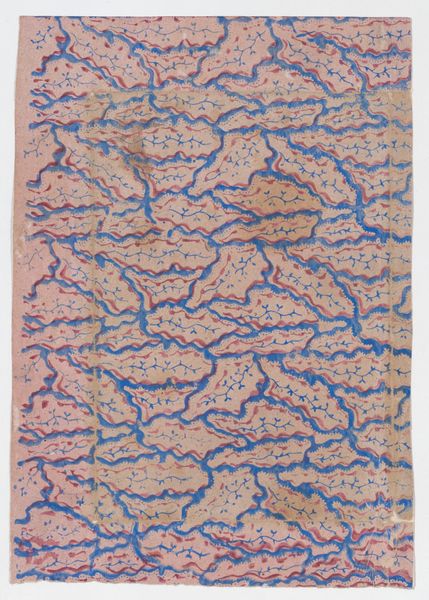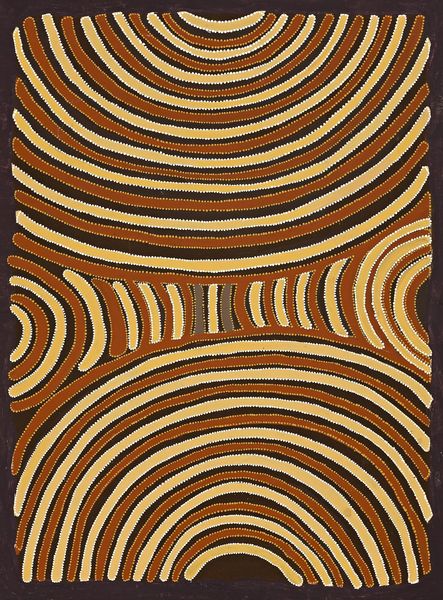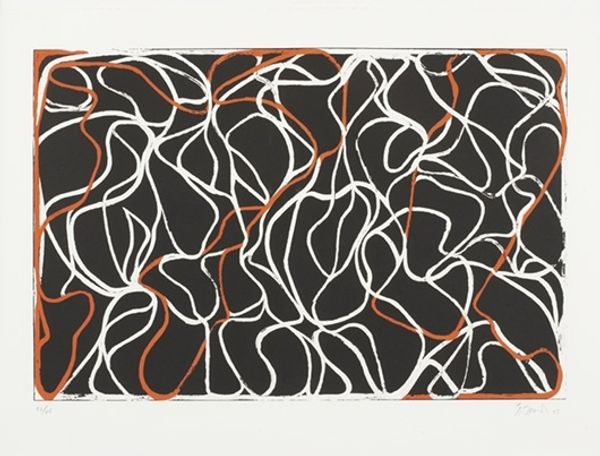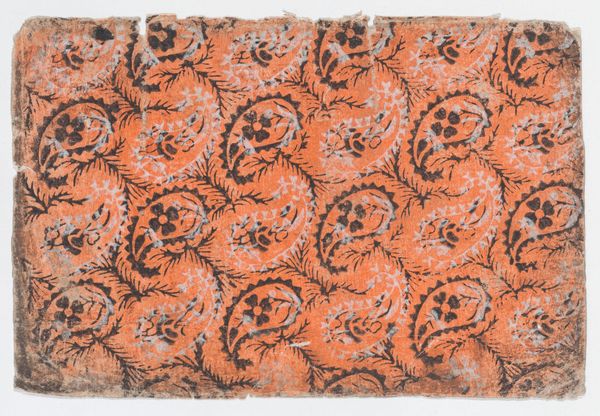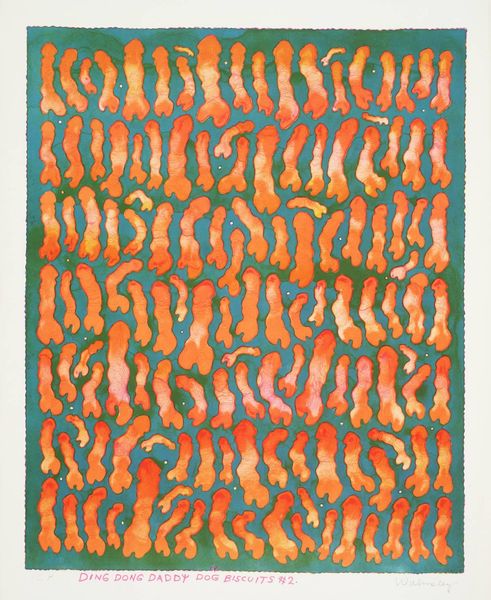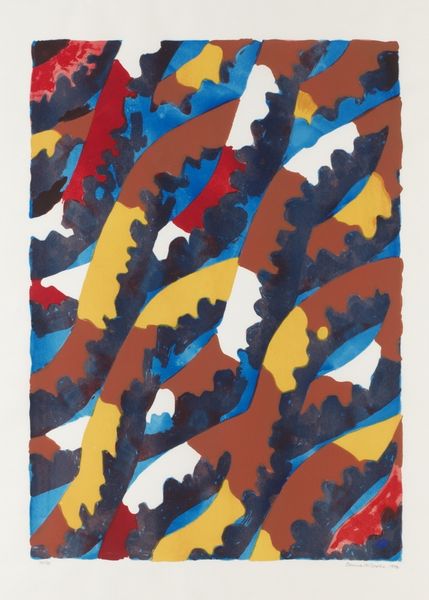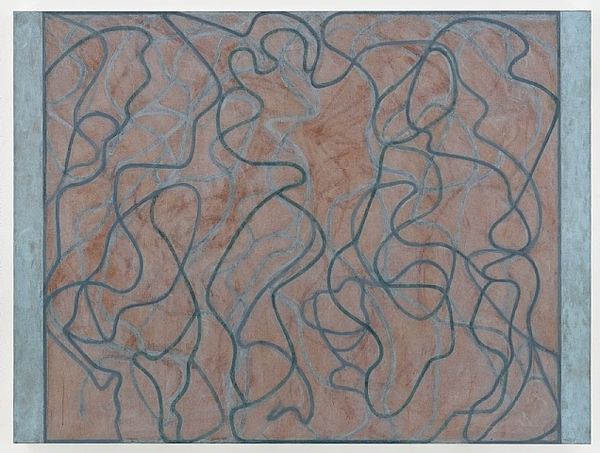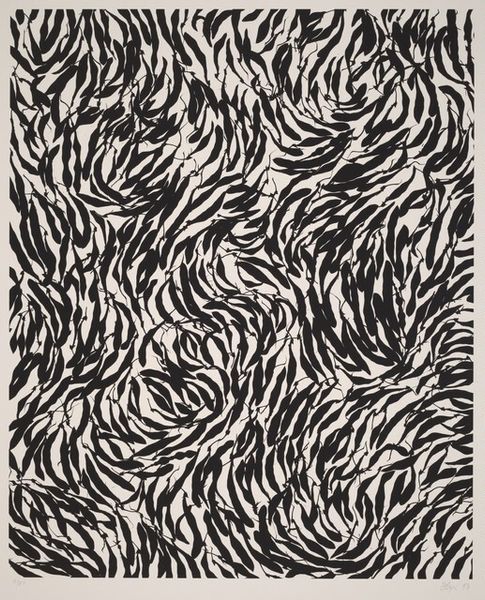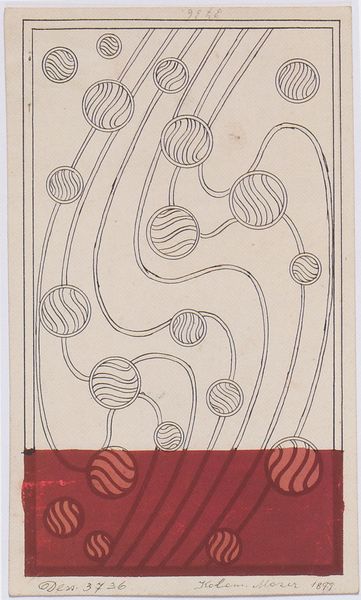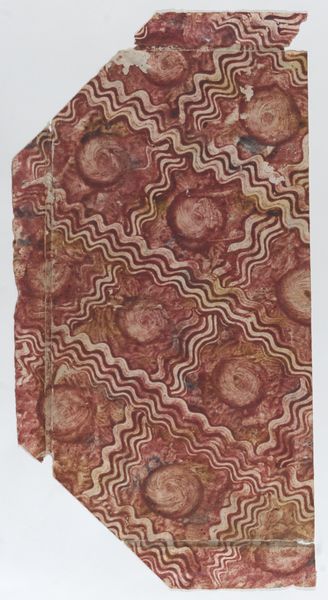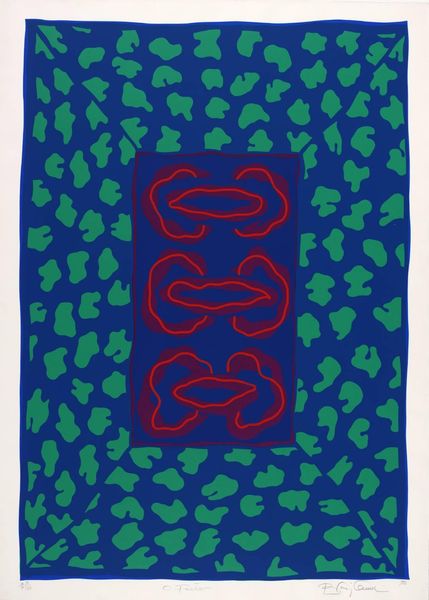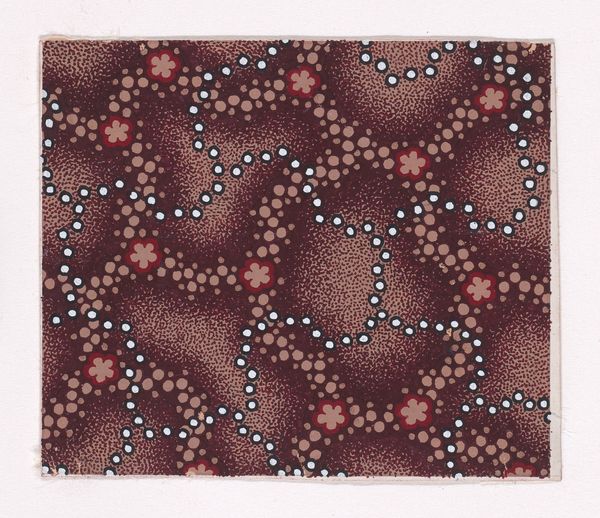
drawing, print
#
drawing
#
organic
# print
#
geometric pattern
#
abstract pattern
#
organic pattern
#
geometric
#
repetition of pattern
#
abstraction
Dimensions: Sheet: 3 15/16 × 2 1/2 in. (10 × 6.3 cm)
Copyright: Public Domain
Curator: Standing before us is an intriguing, modestly scaled piece from the Metropolitan Museum's collection—an anonymous "Sheet with abstract pattern" created sometime between 1800 and 1900. It appears to be a drawing, possibly also a print. Editor: My initial impression is of raw, unrefined energy. There's an almost visceral quality to the stark contrast and repetitive motif. The composition gives me the sensation of looking at microscopic organisms. Curator: Indeed. The interplay between the dark, meandering lines and the lighter background compels us to consider the means and method by which this pattern came into being. The creator’s process, perhaps methodical, but undeniably influenced by organic forms. What labor was required to make something like this, to what use might it have been put? Editor: I wonder about the socio-political forces that might have led to the creation of this particular image at this particular time. Was this intended for purely aesthetic enjoyment, a preliminary sketch, or a design for manufactured goods, given the evident potential for repetition? Was the art market interested in drawings like these and if yes who was the target audience? Curator: Exactly. Consider the material constraints the artist was facing, and then the choices they made in their production: paper quality, ink availability, and of course what was going on around them culturally. Perhaps mass production was their focus, trying to democratize designs. Editor: Or consider how the cultural associations with abstract or geometric art might have influenced its reception. Was it embraced as progressive, or dismissed as merely decorative? This period saw burgeoning print culture; perhaps this artist was experimenting within this commercial sphere. Curator: It certainly moves past the notion of art for art's sake; there's almost an egalitarian attitude here, stripping away any pretence to "high art," focusing instead on raw visual appeal or design utility. Editor: Ultimately, though, what remains most striking to me is how a seemingly simple design prompts so much speculation, echoing historical and cultural narratives we're only beginning to decipher. Curator: Agreed. The image operates at the crossroads of the aesthetic and the functional. A window onto the complex workings of design and making of the 19th century.
Comments
No comments
Be the first to comment and join the conversation on the ultimate creative platform.
